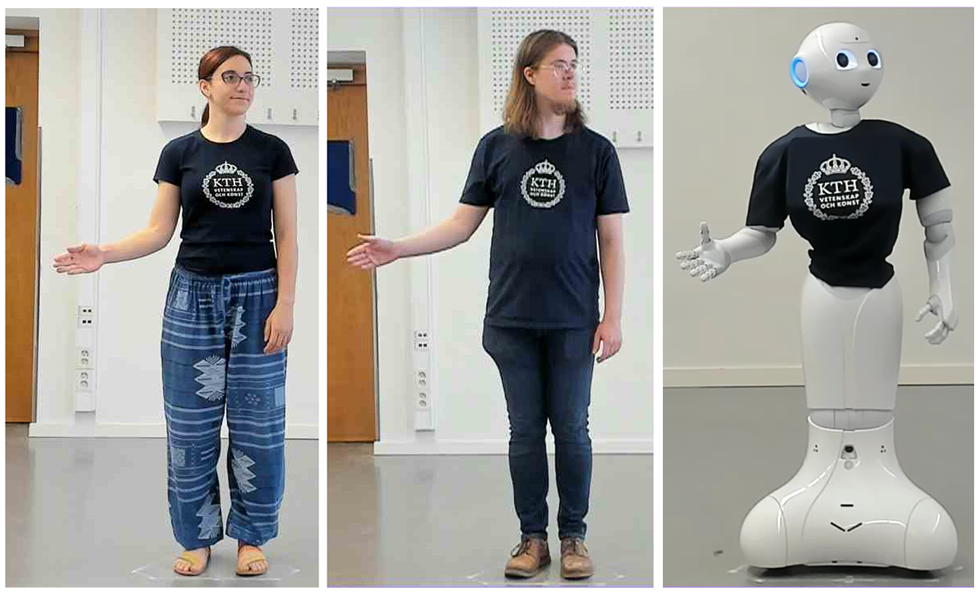Polite robots – a possible future in healthcare

Health in fokus
In human relationships, politeness is essential in how people perceive each other and in building a relationship. The same is true in healthcare when healthcare professionals meet a patient. But how is politeness created in the relationship between a human and a service robot?

"Think about your last visit to the doctor. Courtesy from healthcare professionals is not only expected, but it is also essential to create a sense of comfort and security for patients. Then, imagine that you are facing a service robot in a healthcare facility. How does politeness fit into that equation, and how do we programme politeness into a machine?" says Sahba Zojaji , a PhD student in computer engineering at KTH Royal Institute of Technology who wrote a thesis on "Embodying politeness in persuasive humanoid agents for small group scenarios".
He says that human-robot relationships are not just about being polite but also about designing interactions that feel natural, respectful, and even empathetic. So, how do you incorporate politeness into interactions between humans and service robots? It requires incorporating it into both verbal and non-verbal aspects of interactions.
Sahba Zojaji has conducted several user studies with humanoid robots, i.e. robots with human features, to study politeness as a cornerstone in shaping social interactions. He believes that humanoid robots and digital humans, i.e. computer-generated characters with human features, could become more common in healthcare.
Ethical considerations
"In countries like Japan, robots are becoming more common in many areas, such as supporting older people. "They can remind the elderly to take their medication or help carers with physically demanding tasks such as lifting," he says.
The use of humanoid robots in different situations is not entirely unproblematic. There are ethical considerations need to be further explored, according to Sahba Zojaji. For example, is it ethical for the robot to use persuasive tactics to ensure that a patient takes their medication, for instance, given the delicate balance between autonomy and the risk of undue influence?
"This is a new area, and ethical guidelines are needed. It is essential that academia, industry and policymakers work together to find a balance between pushing the boundaries of innovation and ensuring ethical responsibility in how these technologies are developed and used," he says.
If politeness is programmed into robots' behaviour, they would be better equipped to navigate different social environments in human societies, Sahba Zojaji concludes in her thesis. Politeness makes it easier for robots to become more socially accepted, leading to more sustainable interactions and collaborations between humans and robots.
Cultural differences
"As robots become increasingly integrated into our society, it is essential to recognise and consider cultural differences. For example, politeness varies between countries like Sweden and Japan. For robot interactions to be effective, they must be programmed to recognise and adapt to these cultural variations," he says.
Sahba Zojaji also sees potential for computer-generated characters and robots to play an important role in educational contexts, such as training programmes for medical and nursing students who want to become doctors or nurses.
"The technology can offer virtual environments as simulated scenarios based on real cases. This enables safe learning for students without any risk of harm to actual individuals," he says.
Text: Emelie Smedslund

